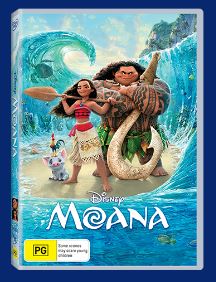My reflections on the Disney movie Moana (2016) (With Bonus Content)

Moana – the Maori word for Ocean – is the story of a young girl who is chosen by the ocean to restore Te Fiti’s heart, and thus get rid of the slow death that is covering all the islands. This movie is important for one big reason. The main character is a brown female who gets the job done herself. Her sidekick is the demi-God Maui; who is basically a jerk and therefore exactly like the Maui that I grew up hearing about.
This movie has faced several criticisms for not being 100% bonafide accurate. But you know what – it’s fiction based on mythology. Yes, it’s a slight mashup of different pacific island cultures, and yes there is some validity to those critics. However, from a broader point of view to see Moana was amazing, because there on the big screen were the legends I grew up with (and not a white man in sight).
When I was ten, our family moved back to the small town that my mother’s family had lived in for 150 years. It was horribly claustrophobic to be related to a high portion of the locals, and to have teachers say things like “oh, I taught your Aunty. You have a lot to live up to”. And because my father is an immigrant, with a non-English last name, I wasn’t quite local enough for many of the locals either. To be the new kid in a town that you have a long family history in is a weird disconnect.
The town, whose named translates to Muddy Water, also had a large Maori population. In New Zealand, all school kids had to learn Maori language and culture at school, and one of the great benefits of having such a big local population of Maori people was that we had the opportunity to make that learning real and normalised through the locals that we went to school with. The Maori legends came to life through real people. I also have Maori cousins, so the connection to that culture is particularly close. As a side note, this is missing in Australian schools – where it is not compulsory to learn the local Aboriginal language, or the basic tenants of culture – and everyone loses because of it.
On the downside, there was a massive undercurrent of racism in the township, and one that I didn’t understand until I left. I just knew that something was wrong with the way people interacted. At the time, and as a naïve white child, I put that unease down to my personal sense of unbelonging, and it took years of listening to people and dismantling my thoughts to understand those dynamics. And to be honest, I’m not sure I have completely succeeded. But I will keep listening and learning.
There is something special about seeing your local legends come to life in a movie. There is something extra special about a popular movie being led by a brown female character with agency, who puts a demi-God in his place and gets on with the task at hand. (Another side note: I would have written Te Whiti with the Maori spelling, but Disney spells her Te Fiti).
Moana has reminded me to share those childhood legends from New Zealand with my own children, and has opened the discussion about how we can learn about the Wangal people of the Eora nation whose land our house sits upon.
My debut novel, To Charm A Bluestocking, is available from Escape Publishing now.
You can buy it here:
